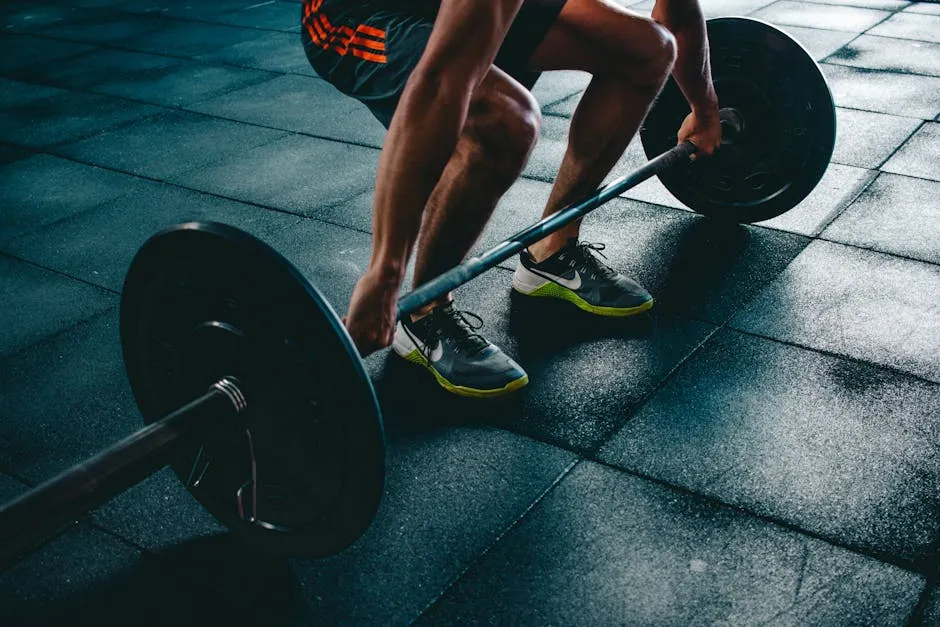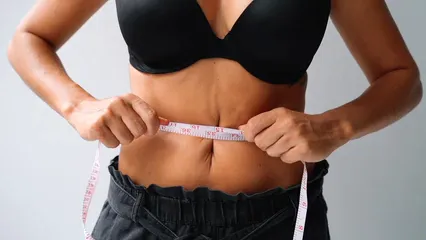Introduction
Understanding body fat percentage is key to assessing health. It goes beyond just weight to reveal more about your body’s composition. Body fat percentage charts cater to various demographics, helping individuals track their fitness. Accurate measurement methods ensure you have reliable data for personal health assessments.
If you’re serious about tracking your body fat percentage, a Body Fat Caliper is a fantastic tool to have. It’s affordable, easy to use, and can help you stay accountable on your fitness journey. Plus, you can impress your friends with your newfound measurement skills!
Summary and Overview
Body fat percentage measures the fat mass in relation to total body weight. It’s vital for overall health, as high levels can lead to serious conditions like heart disease and diabetes. Factors such as age, sex, and activity level significantly affect what’s considered ideal. Generally, younger individuals and those with higher activity levels may have lower fat percentages.
Unlike Body Mass Index (BMI), which uses weight and height, body fat percentage provides a clearer picture of health. It distinguishes between fat and lean mass. Maintaining a healthy body fat percentage can enhance energy levels, improve physical performance, and lower the risk of chronic diseases. Thus, understanding these metrics is crucial for anyone aiming for better health and fitness.

For a deeper understanding of health implications related to body fat, consider exploring obesity in Australia statistics.
Understanding Body Fat Percentage
What is Body Fat Percentage?
Body fat percentage measures the amount of fat in your body. It’s significant because it helps assess overall health. Your body consists of lean mass, which includes muscles, bones, and organs, and fat mass. Knowing your body fat percentage reveals how much of your weight is fat versus lean tissue.
This metric is crucial for health assessments, as excess body fat can lead to various health issues. Maintaining a healthy balance of body fat supports bodily functions and can enhance your overall well-being. To help with your fitness journey, a Smart Scale with Body Fat Measurement can be a game-changer. It gives you a comprehensive overview of your body composition right from home!
Why Body Fat Percentage Matters
High body fat percentage poses several health risks. Conditions like diabetes, heart disease, and hypertension are often linked to excess fat. Unlike Body Mass Index (BMI), which doesn’t differentiate between fat and muscle, body fat percentage offers a clearer picture of health.
Studies show that individuals with high body fat face increased health complications compared to those with lower percentages. For example, research indicates that a body fat percentage above 25% in women and 20% in men heightens the risk of chronic diseases. Understanding these risks empowers you to make informed lifestyle choices for better health.

Body Fat Percentage Charts
Ideal Body Fat Percentage for Women
Understanding the ideal body fat percentage for women is essential for health. This percentage varies by age and activity level. Below is a helpful chart outlining the body fat categories based on age:
| Age Group | Category | Percentage |
|---|---|---|
| 20-29 | Essential Fat | 14-20% |
| Athletes | 14-20% | |
| Fitness | 21-24% | |
| Acceptable | 25-31% | |
| Obesity | 32% and above | |
| 30-39 | Essential Fat | 14-20% |
| Athletes | 14-20% | |
| Fitness | 21-24% | |
| Acceptable | 25-31% | |
| Obesity | 32% and above | |
| 40-49 | Essential Fat | 14-20% |
| Athletes | 14-20% | |
| Fitness | 21-24% | |
| Acceptable | 25-31% | |
| Obesity | 32% and above | |
| 50-59 | Essential Fat | 14-20% |
| Athletes | 14-20% | |
| Fitness | 21-24% | |
| Acceptable | 25-31% | |
| Obesity | 32% and above | |
| 60+ | Essential Fat | 14-20% |
| Athletes | 14-20% | |
| Fitness | 21-24% | |
| Acceptable | 25-31% | |
| Obesity | 32% and above |
Essential fat is crucial for reproductive health and hormone regulation. Athletes typically maintain lower body fat for better performance. Acceptable ranges indicate a healthy balance, while obesity levels pose health risks. Monitoring your body fat percentage can guide lifestyle choices for overall well-being. Don’t forget to check out a Fitness Tracker with Heart Rate Monitor to keep your workouts effective and safe!

Ideal Body Fat Percentage for Men
Men also have distinct body fat percentage categories that change with age. Here’s a chart to clarify these categories:
| Age Group | Category | Percentage |
|---|---|---|
| 20-29 | Essential Fat | 2-5% |
| Athletes | 6-13% | |
| Fitness | 14-17% | |
| Acceptable | 18-24% | |
| Obesity | 25% and above | |
| 30-39 | Essential Fat | 2-5% |
| Athletes | 6-13% | |
| Fitness | 14-17% | |
| Acceptable | 18-24% | |
| Obesity | 25% and above | |
| 40-49 | Essential Fat | 2-5% |
| Athletes | 6-13% | |
| Fitness | 14-17% | |
| Acceptable | 18-24% | |
| Obesity | 25% and above | |
| 50-59 | Essential Fat | 2-5% |
| Athletes | 6-13% | |
| Fitness | 14-17% | |
| Acceptable | 18-24% | |
| Obesity | 25% and above | |
| 60+ | Essential Fat | 2-5% |
| Athletes | 6-13% | |
| Fitness | 14-17% | |
| Acceptable | 18-24% | |
| Obesity | 25% and above |
Men generally need less body fat for essential functions. Athletes often aim for lower percentages to enhance performance. Acceptable ranges indicate a healthy status, while obesity can lead to various health issues. Knowing your body fat percentage can motivate healthier habits and lifestyle adjustments. If you’re looking to improve your strength, consider investing in a Set of Adjustable Dumbbells. They can be a versatile addition to your home gym!

How to Calculate Body Fat Percentage
Various Methods of Measurement
Calculating body fat percentage can be done through several methods, each with its pros and cons.
Skinfold Calipers are popular for measuring fat at specific body sites. This method is cost-effective and easy to perform. However, results depend heavily on the technique and the skill of the person taking the measurements. Inconsistent application can lead to varying results.
DEXA Scans use low-level X-rays to provide an accurate body composition analysis. They measure bone density, muscle mass, and fat. While precise, DEXA scans can be expensive and less accessible. If you want to get a taste of this technology at home, consider a DEXA Scan Body Composition Analysis Device.
Bioelectrical Impedance Analysis (BIA) is another method. It sends a small electrical current through the body to estimate fat percentage. BIA is widely available and quick but can be influenced by hydration levels, affecting accuracy.
Each method has its unique benefits and limitations. Choosing the right one depends on your needs, budget, and access to equipment. If you’re looking for a quick and easy way to measure your body fat at home, a Bioelectrical Impedance Scale for Home Use can be a great investment!

Simplified Calculations at Home
If you’re looking to estimate your body fat percentage at home, there are a few methods to consider. One common approach involves using tape measurements around key areas like the waist, hips, and neck. This method is straightforward and requires only a measuring tape. Make sure to grab a reliable Measuring Tape for Body Measurements to get accurate results!
Bioimpedance Scales are another option. These scales provide a rough estimate of your body fat percentage by sending an electrical signal through your body. While convenient, they are less accurate than professional methods. Hydration and recent exercise can skew results.
Remember, home methods can offer insights but may not be precise. For accuracy, consider consulting a professional who can provide more reliable measurements.

Problems and Limitations
Issues with Body Fat Percentage Assessments
Body fat percentage assessments can sometimes be misleading. Many individuals may find discrepancies in their reported body fat percentages. This can be due to variations in measurement techniques or equipment used. For instance, methods like skinfold calipers rely heavily on the skill of the person taking the measurement. Even slight differences can lead to significant variations in results.
Cultural and ethnic considerations also play a role in body fat percentage norms. What is deemed a healthy body fat percentage can differ greatly among different populations. This means that a one-size-fits-all approach may not be effective. It’s crucial to understand these differences when interpreting your results.
Furthermore, using BMI as a measure of body fat often leads to confusion. BMI does not differentiate between fat and muscle. A muscular individual may be categorized as overweight or obese, despite having a low body fat percentage. This limitation can mask the true health status of individuals, making it essential to consider multiple metrics.

When to Consult a Professional
Recognizing Signs for Professional Help
There are specific scenarios when seeking professional help regarding body fat percentage is advisable. If you notice unexplained weight changes, consulting a healthcare professional is important. This could indicate underlying health issues that need addressing. Additionally, if you’re unsure about your body fat measurements or how to interpret them, a professional can provide clarity.
Trainers and dietitians also play a vital role in managing body composition. They can create personalized plans tailored to your unique needs. If you’re looking to change your body fat percentage significantly, their expertise can guide you. They can help set realistic goals and provide ongoing support to ensure you’re on track. To enhance your fitness routine, consider getting a Set of Resistance Bands for Home Workouts. They’re perfect for strength training and can be used in various exercises!

Conclusion
Understanding and tracking body fat percentage is essential for your overall health. It provides insights that weight alone cannot. Utilizing body fat charts can help you gauge your progress. Consulting professionals can offer personalized advice tailored to your needs. Ultimately, the goal is to promote a healthy lifestyle that enhances well-being. Engage with these tools and resources to take control of your health journey. And don’t forget to fuel your workouts with a quality Protein Powder for Muscle Recovery!

FAQs
What is the ideal body fat percentage for athletes?
Athletes typically aim for body fat percentages between 6-13% for men and 14-20% for women.
How can I measure my body fat percentage at home?
You can use bioelectrical impedance scales or skinfold calipers for home measurements. However, accuracy may vary.
What health risks are associated with high body fat percentage?
High body fat can lead to diabetes, heart disease, and hypertension.
How often should I check my body fat percentage?
Checking every 4-6 weeks is recommended to track progress effectively.
Are body fat percentage charts the same for men and women?
No, charts differ due to biological factors. Men generally have lower body fat percentages compared to women.
Please let us know what you think about our content by leaving a comment down below!
Thank you for reading till here 🙂
All images from Pexels




